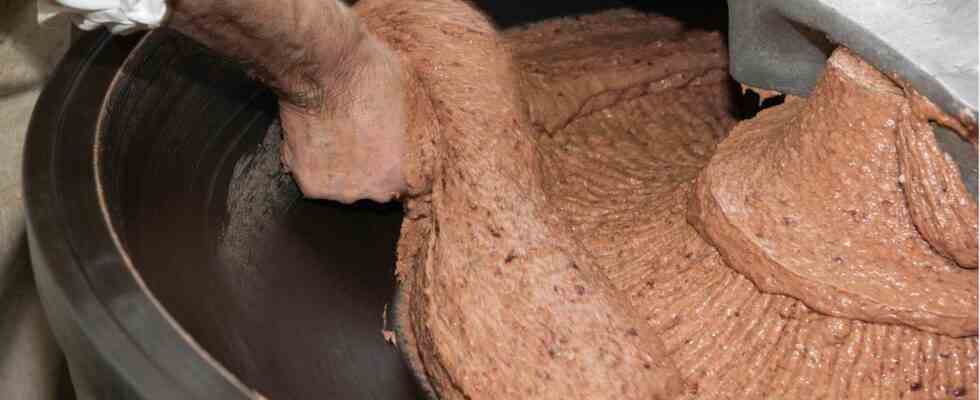meat industry
Mechanically separated meat in poultry sausage? Industry insider: “Not unusual”
If you mix mechanically separated meat with real meat, it has so far hardly been possible to prove it. This is said to have changed thanks to a new research method (symbol image).
© Ernst Weingartner / Picture Alliance
According to a media report, several meat manufacturers may have used cheap mechanical separator meat in their sausages without labelling. An industry expert considers this to be “not unusual”. However, the manufacturers deny any such procedure.
The meat industry has been criticized again: “Panorama” and “Spiegel” accuse sausage manufacturers of using cheap mechanically separated meat in their products without labeling it. That would be punishable under German law. But the use of the inferior ingredient has so far been extremely difficult to prove.
A new laboratory study is now providing evidence that several meat companies are mixing the criticized porridge of leftover meat, bones and connective tissue in poultry sausage, according to media reports. According to a longtime industry insider with whom the star could speak exclusively, this would not be surprising.
What is mechanically separated meat?
Mechanically separated meat became known to the general public in particular during the BSE crisis in the early 2000s. These are pieces of meat that have been mechanically detached from the bone. Meat leftovers are often used for the production.
These are pressed through a perforated disk at high pressure. Bone splinters and pieces of cartilage get stuck during this process. Soft components such as muscles, fat and connective tissue are pressed. This creates a mushy mass. In principle, this mass is harmless for consumers. According to German law, however, it is not considered meat. Products that contain mechanically separated meat must therefore be clearly labelled.
MSM is a black box
It is not known how much mechanically separated meat is actually processed in Germany. The consumer organization “Foodwatch” reported back in 2014 that around 70,000 tons of mechanically separated meat disappear from the market inexplicably every year. It is not known who processes them or into which products they flow. According to “Foodwatch”, the responsible federal ministries pretend to be clueless about imports or production quantities of mechanically separated meat. The industry cloaks itself in an iron silence. And the system gastronomy, which is not even subject to the labeling requirement when using mechanically separated meat, asserts that it does not process the inferior ingredient.
According to “Foodwatch”, the EU Commission estimates the annual production of mechanically separated meat at 700,000 tons across Europe. How much of it ends up in Germany is also not known. However, the Netherlands seems to play an important role in production, according to research by the star as well as those of “Foodwatch”.
Three major producers of mechanically separated meat are based in neighboring Germany. There are no customs controls in the EU. It is therefore difficult to see how much is imported into Germany. A longtime industry insider, who wished to remain anonymous, explained to him star, the processing of mechanically separated meat is nothing unusual in the meat industry. He is aware of past cases in which leftover meat was exported to the Netherlands to be processed there into mechanically separated meat. This was then reintroduced without being labeled as such. The reason for this is a legal loophole in Dutch law.
In this procedure, meat manufacturers in Germany would in turn have the opportunity to claim that they were getting high-quality meat that they could process. Although they knew that it was mechanically separated meat, since they themselves had supplied the raw material for it and commissioned the processing into mechanically separated meat.
Manufacturers deny the allegations
According to “Panorama”, nine of the 30 samples of poultry sausage and meat products tested positive for mechanically separated meat. The accused also include the “Zur-Mühlen-Group”, which belongs to the Tönnies group of companies. In a statement, Tönnies denies the use of mechanically separated meat. “These statements in the reports are clearly false.” The use of mechanically separated meat in the products mentioned is expressly excluded by the definition of the raw materials and the production process,” says Tönnies. There is no evidence of the use of mechanically separated meat in the products. In addition, there is the research method with which the editors of Panorama and Spiegel want to have proven the inferior ingredient, no information about their use.”We protest against such unfounded allegations,” says the company.
The precise nature of the research method has not yet been conclusively clarified. The researchers report an accuracy of 95 percent, the meat industry points to deficiencies in the selectivity in the samples. According to Spiegel, the extracted enzymes, which are intended to provide evidence of mechanically separated meat, come from the intervertebral discs of chickens. The meat industry points out that these enzymes are found in meat anyway.
However, the State Office for Food Safety in Mecklenburg-Western Pomerania has already shown interest in the new method.
Sources: daily News, The mirror, food watch, Statement Tönnieswith material from AFP

